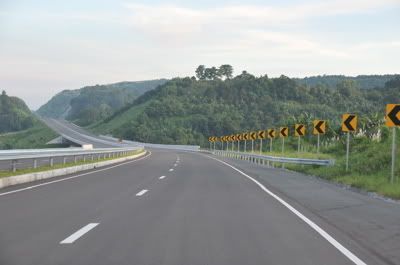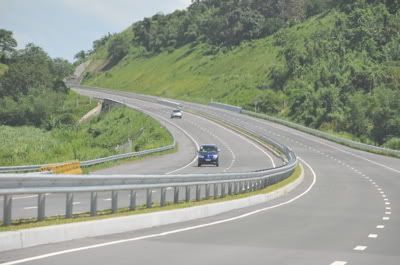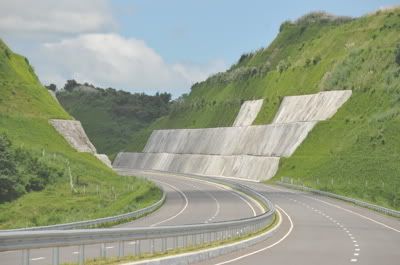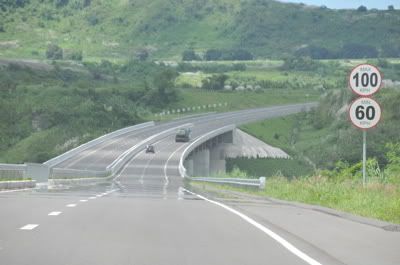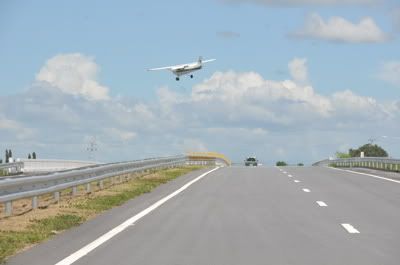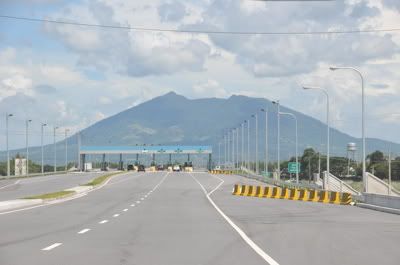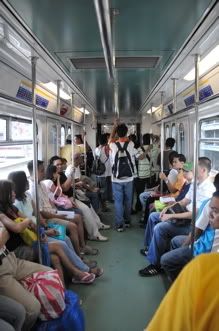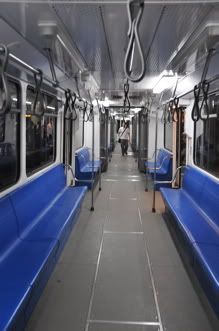Below is the editorial of today's issue of the Business Mirror, which also reflects the opinion expressed yesterday in the blog.
The MRT Conundrum
MANDALUYONG Mayor Benjamin Abalos Jr. may have scored political points with
his 300,000 constituents when he decided to take on the Metro Rail Transit Corp.
(MRTC). And, he has a valid point in criticizing the national government for
undertaking, in the agreement covering the MRT, to pay the local taxes for a
private consortium, only to say later that it has no intention of doing so.
However, the millions of other residents of the capital region—of which
Mandaluyong is but a tiny slice—are not amused by his move.MRTC operates the Metro Rail Transit System, popularly known as the MRT,
Metrostar Express or Metrostar, which has a single line, MRT-3 or the Blue Line.
MRTC is a private company operating in partnership with the Department of
Transportation and Communications under a build-lease-transfer (BLT)
agreement.A judge—from Mandaluyong, naturally—has been persuaded by the mayor’s
argument that MRTC owes his city some P2 billion in real-estate taxes. The levy
pertains to three MRT-3 stations located near the intersections of Ortigas, Shaw
and Boni avenues.The local authorities of two other cities have sought to dun MRTC for
building train stops in their jurisdictions. The bid of Quezon City to exact
toll on the commuter-train operator has been dismissed, while that of Makati is
still pending. It is only in Mandaluyong—so far—that the attempt by local
officials to get their piece of the pie from a key national infrastructure has
met judicial success.With MRT-3 passenger volume topping 500,000 on weekdays, Abalos might have
been led to believe that the commuter line’s operators must be raking in
megaprofits. In fact, thanks to complications in the company’s BLT arrangement
with the national government, MRTC is not even able to generate enough revenue
to expand its fleet of coaches. Despite the spike in ridership as a result of
skyrocketing fuel prices in the past few months, the commuter-train line only
manages to continue running because of state-guaranteed earnings.When first conceived in the early 1990s, the MRT-3 was envisioned to
decongest the perennially heavy traffic on Metro Manila’s main artery, Epifanio
de los Santos Avenue (Edsa). Although Edsa still looks like a long, winding
parking lot far too often, the train has become a welcome alternative to
hundreds of thousands of commuters who need to get from the northeastern part of
Metro Manila to points further south and west of the capital region and vice
versa in a hurry. The MRT-3 passes through not just Mandaluyong, but also Pasay,
Makati, San Juan and Quezon City.Like its predecessor, the Light Rail Transit 1 that runs from Baclaran to
Monumento, and the newer line stretching from Marikina to C. M. Recto Avenue in
Manila, the MRT-3 is a key component of a grand mass-transport system that Metro
Manilans have been demanding for decades. Work has begun on yet another line
that would connect San Jose del Monte in Bulacan to North Avenue in Quezon City.It’s hard to imagine the chaos that would ensue if the legal theory that
underpinned the Mandaluyong judge’s decision affirming Mandaluyong City’s power
not only to impose real-estate taxes on the MRT-3, but also to seize the three
stations located in the city were applied to the other commuter-train lines, as
well as to civil works like the North and South Luzon Expressways, Skyway and
the Coastal Road toll way.Dozens of city, town, provincial and even barangay officials might be tempted
to exercise virtually feudal rights over national infrastructure.Local executives like Mayor Abalos ought to appreciate projects like the
MRT-3 not as another opportunity to raise funds, but as a boon to their
constituents and, just as important, an incentive to do business in their
localities.


